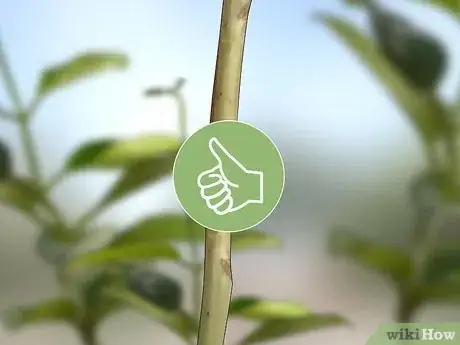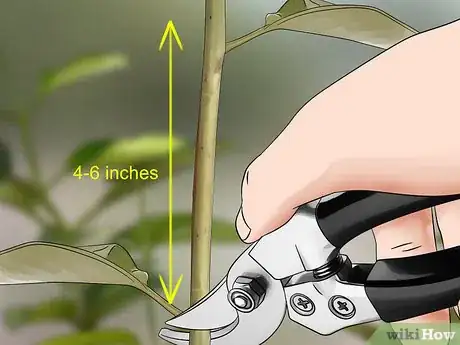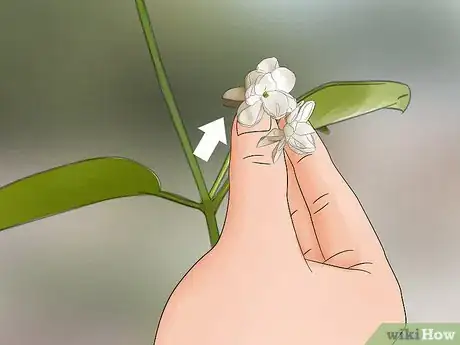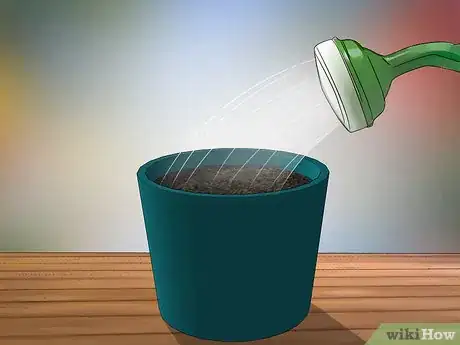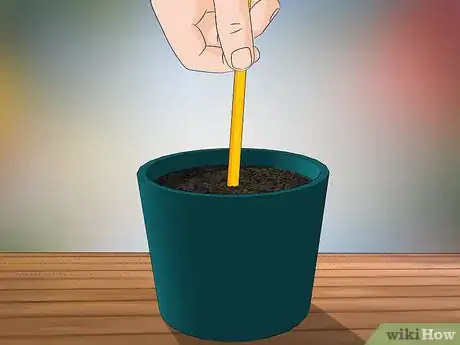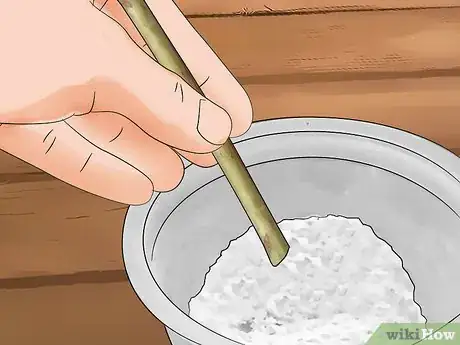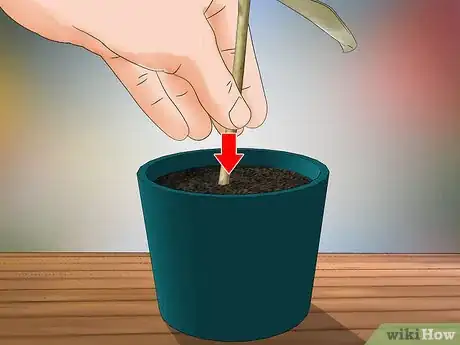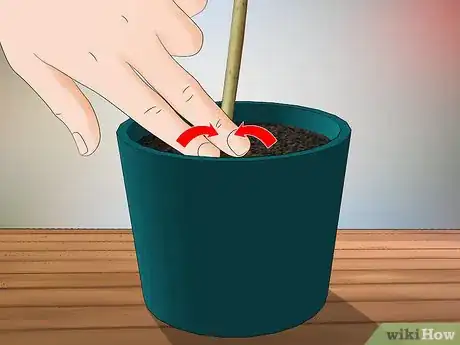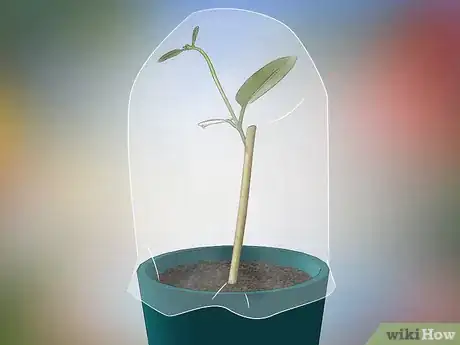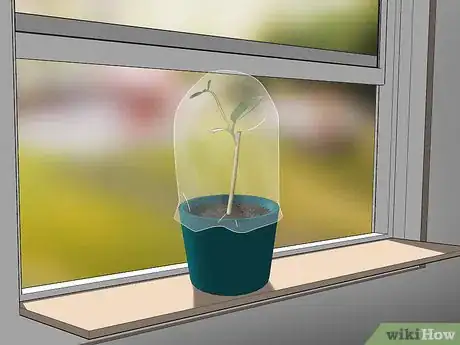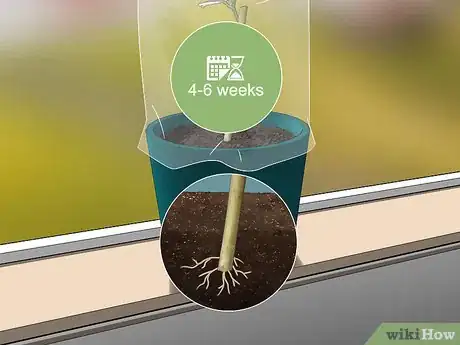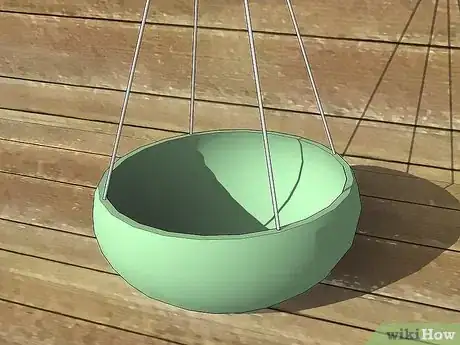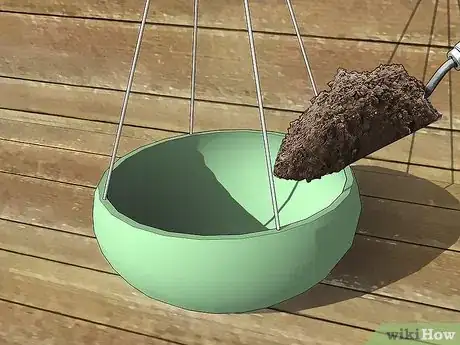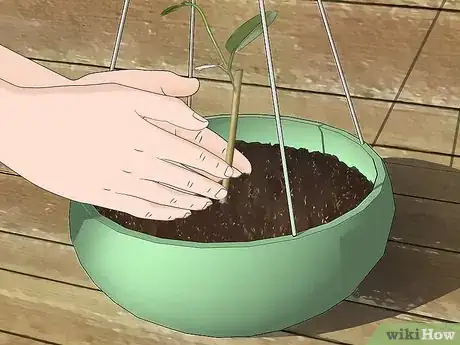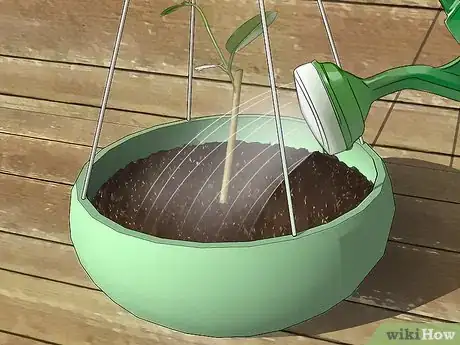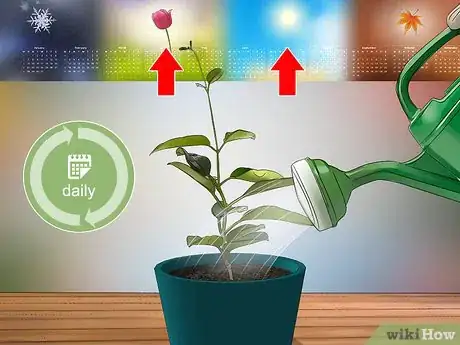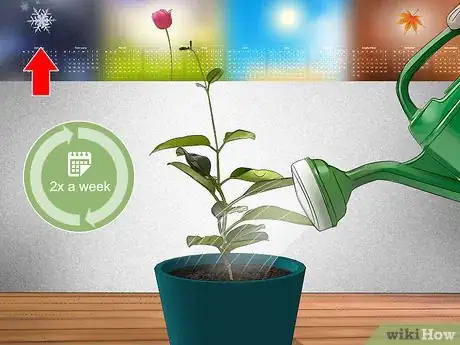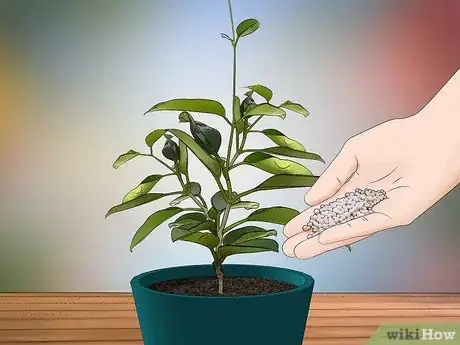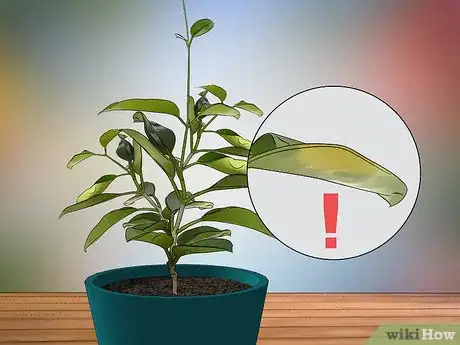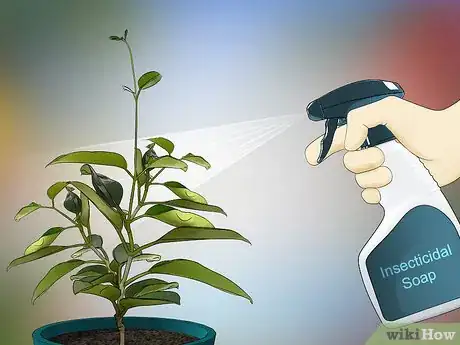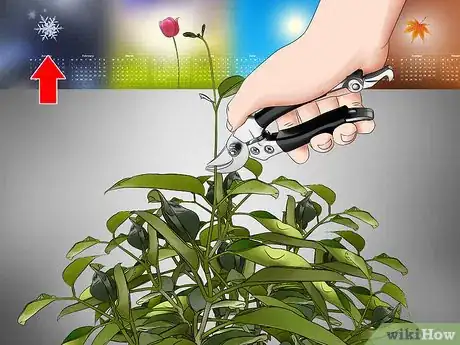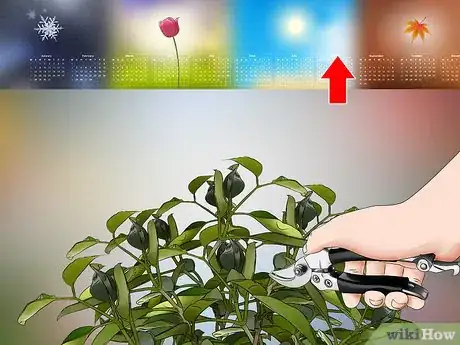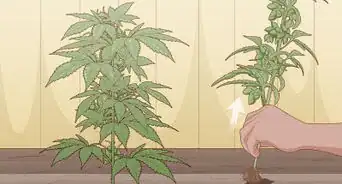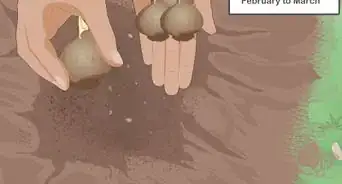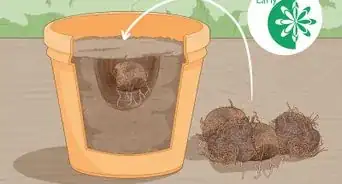This article was co-authored by Melinda Meservy and by wikiHow staff writer, Danielle Blinka, MA, MPA. Melinda Meservy is a Plant Specialist and the Owner of Thyme and Place, a botanical boutique offering plants and gifts in Salt Lake City, Utah. Before starting her own business, Melinda worked in process and business improvement and data analytics. Melinda earned a BA in History from the University of Utah, is trained in lean and agile methodologies, and completed her Certified Professional Facilitator certification. Thyme and Place offers indoor plants and containers, a fully stocked potting bench, and tips on plants to suit your space and lifestyle.
There are 7 references cited in this article, which can be found at the bottom of the page.
This article has been viewed 202,241 times.
Jasmine makes a lovely addition to your home or garden. When it blooms, it produces delicate, fragrant buds. You can easily grow jasmine from cuttings taken from a healthy plant. First, you’ll need to take cuttings from an existing jasmine plant and encourage them to take root. Then, you can plant and care for your cuttings.
Steps
Taking a Cutting
-
1Select a healthy, semi-hard stem that grew in the current year. Look for a stem that’s green and sprouting leaves. It should also still be flexible.[1]
- It’s okay to take more than 1 cutting from the plant, as long as you don’t cut away more than one-third of the plant.
- Taking more cuttings from your jasmine increases your chances of successfully growing a new plant.
-
2Use small pruning shears to cut 4 to 6 inches (10 to 15 cm) of stem. It’s best to cut the stem just below a leaf. The stem is more likely to sprout healthy roots if you cut right below a leaf node.[2]
- A leaf node is the nub that the leaf grows from.
- You can also use a sharp knife or pair of sharp scissors.
Advertisement -
3Remove the leaves from the bottom of the cutting. Make sure that you don’t plant any leaves beneath the surface of your potting soil. However, the cutting is more likely to root if the top few leaves are left on the stem.[3]
- Leave a few leaves at the top of the cutting while removing most of the leaves from the bottom.
- You can cut the leaves off the stem or pluck them with your fingers.
- Removing most of the leaves helps to balance the growth between roots and leaves.
-
4Deadhead any flowers from the cutting. This helps to ensure that your cutting will grow healthier. Flowers naturally try to seed and will take nutrients from the rest of the plant to do so. Additionally, dying flowers will mold, damaging the rest of the cutting.[4]
- You can cut the flowers off or pinch them off.
- Don’t take cuttings from stems that are in bloom. Even if a flower is cut off, it will still be in the bloom stage.
Encouraging Root Growth
-
1Prepare a small container with potting soil. Fill the container with a fertile, pre-mixed potting soil. It’s okay to use 1 pot for several cuttings, as you will transplant them after they sprout roots.[5]
- A small planter of about 6 to 8 inches (15 to 20 cm) works great.
- Choose a pot with drainage holes.
-
2Wet the soil with water. You shouldn’t water the cuttings after you place them in the soil, as they don’t yet have roots. Instead, pre-moisten the soil.[6]
- Simply pour water over the soil, allowing the excess to drain out through the holes at the bottom of the pot.
-
3Use a pencil to create a hole for each cutting. Push the pencil down into the soil deep enough for the bottom third of the stem to fit below the soil. Make sure that your hole is wide enough that the cutting is not rubbing against the sides of the soil.
- You’ll need a gap that allows you to insert the cutting into the soil without the rooting hormone rubbing off.[7]
-
4Dip your cutting in root hormone. Use a quick movement to coat the end of your stem with rooting hormone. You don’t need to soak it.[8]
- Rooting hormones come in powder and gel form.
- Rooting hormone encourages faster and stronger root growth.
- Make sure that you pour the rooting hormone into a clean container before dipping, then discard the used solution. Don’t dip the stem directly into your bottle of root hormone, as that will ruin the product.[9]
-
5Insert the cutting into the prepared potting soil. Gently lower it into one of the pencil holes you made, careful not to rub off the rooting hormone. Continue to hold onto the stem until you secure the soil around it.[10]
-
6Use your finger to press the soil around the cutting. Push the soil against the stem, careful to not move the stem. The top of the potting soil should be firm against the cutting once you’re finished.[11]
-
7Put a plastic bag around your plant, filling it with air. Twist the top of the bag closed. This will keep your cutting moist as it takes root. It’s important that the bag not touch any part of the plant, however, as this can make the plant grow mold.[12]
- You can open the bag occasionally to spritz your cutting with water. Add more air before closing it again.
-
8Place your cutting in sunlight. A good location is a windowsill that gets a lot of light. Jasmine needs lots of sunlight to thrive. Your cutting should get 6-8 hours of sunlight each day.[13]
- It’s best to keep the cutting indoors.
-
9Wait 4-6 weeks for the plant to sprout roots. Once the roots form, you can transplant your cuttings into a new container.
- If your cutting has not formed roots after 6 weeks, then the rooting likely failed. You can try again with a new cutting.
Transplanting Your Cuttings
-
1
-
2Fill the pot with loose, all-purpose potting soil. Leave a small space in the middle of the container for the cutting. You’ll want to bury the bottom portion of the stem, just as you did when you sprouted the roots.[16]
- You can buy potting soil at a gardening store or online.
-
3Cover the roots and lower stem of the jasmine stem with soil. Bury the part of the plant that was under the soil during the rooting process. Pat the soil lightly around the transplanted cutting, so that the soil supports the plant.[17]
- Make sure that you don’t plant any leaves below the soil.
-
4Water the jasmine. Provide enough water to moisten the soil. The excess water should flow away from the roots and out through the drainage holes at the bottom of the container.[18]
- Water jasmine when the soil feels dry to the touch.
-
5Place the jasmine where it gets at least 6 hours of direct sun each day. Jasmine thrives in full sun, especially in spring and summer. Check the area where you want to grow your jasmine to make sure that it receives proper sun by observing the sunlight at different times of day.
- During winter, it’s okay for your jasmine to get less direct sunlight, as this is its dormant period.[19]
- It doesn’t have to be 6 consecutive hours. For example, the jasmine may get 3 hours of sun in the morning and 3 hours of sun in the afternoon.
Caring for Your Jasmine
-
1Water daily during the spring and summer. Jasmine thrives in full sun during the summer, but all that sunlight can be very drying. Make sure that the soil is kept moist during the hot season by watering your jasmine every morning.[20]
- Watering in the morning allows the excess to evaporate over the course of the day.
- It’s best to allow the soil to dry between waterings.[21] You can check that the soil is dry by feeling it with your finger. Dry soil should feel loose. If your soil isn’t drying out every day, then you can reduce the number of waterings to every other day or twice a week.[22]
-
2
-
3Provide a high potassium fertilizer once a month. You can use a liquid or granular fertilizer, depending on your preferences. Good options include tomato fertilizer, seaweed fertilizer, or wood ash.[25]
- You can get a fertilizer at a gardening store or online.
-
4Watch for signs of root rot. Jasmine is very susceptible to root rot.[26] Early signs of root rot include slow growth, yellowing leaves, dying leaves, dark roots, and limp roots. If you notice these signs, your plant may have root rot, which can be treated with a fungicide.[27]
- You can get a plant fungicide in a gardening store or online.
- Avoid overwatering to prevent root rot.
-
5Protect against mealybugs by applying a natural insecticide. The best options are neem oil, horticultural oil, or insecticidal soap weekly. Jasmine is very susceptible to mealybugs, which enjoy eating the plant.[28]
- If your jasmine is outdoors, then the best way to prevent mealybugs is to support your lady beetle and spider populations.
- If you spot mealy bugs on your plant, you can dab 70% isopropyl alcohol directly onto the bugs, which may kill them.[29]
-
6Use small pruning shears to shape your winter jasmine in late spring. This is right after the jasmine blooms. Trim the jasmine to your desired shape. Remove weak or crossed branches.[30]
- Don’t trim more than one-third of the plant at 1 time.
- You don’t have to prune your jasmine if you like its natural shape.
-
7Prune summer jasmine in late summer after it blooms. Use a pair of small pruning shears. You can shape the jasmine, as desired. Cut branches that feel thin or weak, as well as those that are crossing over each other.[31]
- Make sure that you don’t prune more than one-third of the plant at 1 time.
Community Q&A
-
QuestionCan ericaceous peat be used used for potting jasmine cuttings?
 NinoxTop AnswererYes, but you have to mix it with sand and add gravel at the bottom of the pot.
NinoxTop AnswererYes, but you have to mix it with sand and add gravel at the bottom of the pot.
References
- ↑ http://homegardeners.in/grow-care-jasmine-plant/
- ↑ http://www.missouribotanicalgarden.org/gardens-gardening/your-garden/help-for-the-home-gardener/advice-tips-resources/visual-guides/propagating-plants-by-cuttings.aspx
- ↑ http://homegardeners.in/grow-care-jasmine-plant/
- ↑ http://www.missouribotanicalgarden.org/gardens-gardening/your-garden/help-for-the-home-gardener/advice-tips-resources/visual-guides/propagating-plants-by-cuttings.aspx
- ↑ http://www.missouribotanicalgarden.org/gardens-gardening/your-garden/help-for-the-home-gardener/advice-tips-resources/visual-guides/propagating-plants-by-cuttings.aspx
- ↑ http://www.missouribotanicalgarden.org/gardens-gardening/your-garden/help-for-the-home-gardener/advice-tips-resources/visual-guides/propagating-plants-by-cuttings.aspx
- ↑ http://www.missouribotanicalgarden.org/gardens-gardening/your-garden/help-for-the-home-gardener/advice-tips-resources/visual-guides/propagating-plants-by-cuttings.aspx
- ↑ http://homegardeners.in/grow-care-jasmine-plant/
- ↑ http://www.missouribotanicalgarden.org/gardens-gardening/your-garden/help-for-the-home-gardener/advice-tips-resources/visual-guides/propagating-plants-by-cuttings.aspx
- ↑ http://www.missouribotanicalgarden.org/gardens-gardening/your-garden/help-for-the-home-gardener/advice-tips-resources/visual-guides/propagating-plants-by-cuttings.aspx
- ↑ http://www.missouribotanicalgarden.org/gardens-gardening/your-garden/help-for-the-home-gardener/advice-tips-resources/visual-guides/propagating-plants-by-cuttings.aspx
- ↑ http://www.missouribotanicalgarden.org/gardens-gardening/your-garden/help-for-the-home-gardener/advice-tips-resources/visual-guides/propagating-plants-by-cuttings.aspx
- ↑ http://homegardeners.in/grow-care-jasmine-plant/
- ↑ https://www.almanac.com/plant/jasmine
- ↑ https://www.rhs.org.uk/advice/profile?PID=291
- ↑ https://www.almanac.com/plant/jasmine
- ↑ http://homegardeners.in/grow-care-jasmine-plant/
- ↑ http://homegardeners.in/grow-care-jasmine-plant/
- ↑ https://www.almanac.com/plant/jasmine
- ↑ https://www.rhs.org.uk/advice/profile?PID=291
- ↑ Melinda Meservy. Plant Specialist. Expert Interview. 18 August 2020.
- ↑ https://www.almanac.com/plant/jasmine
- ↑ Melinda Meservy. Plant Specialist. Expert Interview. 18 August 2020.
- ↑ https://www.almanac.com/plant/jasmine
- ↑ https://www.rhs.org.uk/advice/profile?PID=291
- ↑ https://www.almanac.com/plant/jasmine
- ↑ https://extension.psu.edu/fungal-root-rots-and-chemical-fungicide-use
- ↑ https://www.almanac.com/plant/jasmine
- ↑ http://ipm.ucanr.edu/PMG/PESTNOTES/pn74174.html
- ↑ https://www.rhs.org.uk/advice/profile?PID=291
- ↑ https://www.rhs.org.uk/advice/profile?PID=291
About This Article
To grow jasmine from cuttings, you’ll need to remove the cutting correctly from the plant and encourage root growth. Choose a cutting that has a green stem with plenty of leaves on it. Remove the leaves from the lower part of the cutting and chop off any flowers, which can use up the nutrients required to produce roots. You’ll need to dip the cutting’s stem in root hormone and plant it in a container with damp soil. After 4 to 6 weeks, your cutting should sprout roots. Once this happens, replant it into a larger pot so it can begin to grow. For tips on how to water your jasmine plant after you’ve transplanted it, read on!
